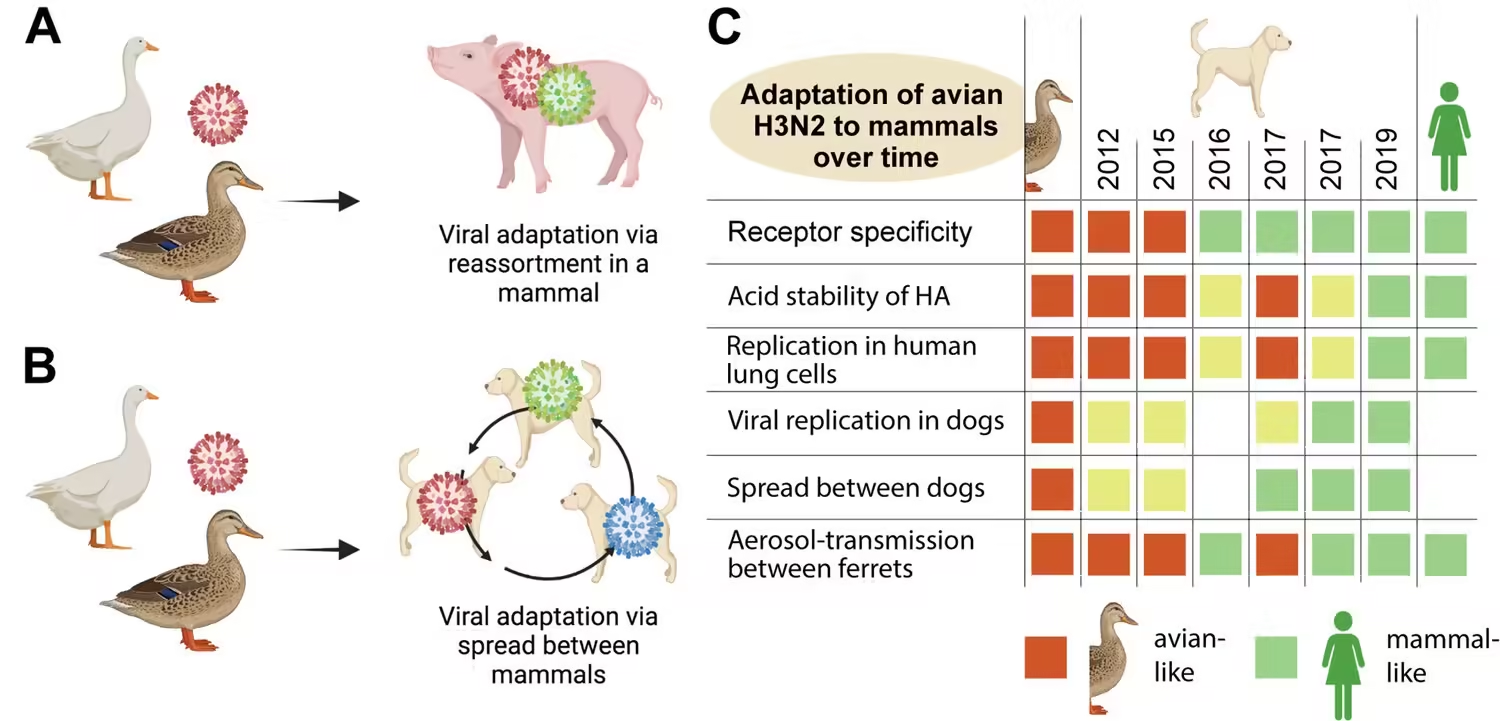Avian influenza, or bird flu, has indeed been causing significant concern due to its unprecedented spread and potential implications for both animal and human health. Here’s a summary of recent bird flu occurrences and developments around the world:
Key Points on Avian Influenza
- United States:
- Spread in Dairy Cattle: For the first time, dairy cattle have been infected by H5N1, with outbreaks reported in 12 states. The affected workers have experienced mild symptoms like conjunctivitis.
- Virus Details: The strain in the US belongs to clade 2.3.4.4b, genotype B3.13, specific to North America.
- Mexico:
- Human Case: A resident died with H5N2 avian influenza; however, the cause of death was attributed to chronic illness rather than bird flu, as there was no known animal exposure.
- Australia:
- Child Infection: A child with H5N1 had traveled to Kolkata, India. The virus is part of a Southeast Asian strain.
- Poultry Outbreaks: Australia is dealing with outbreaks of H7N3, H7N8, and H7N9 strains, likely introduced via wild birds.
- India:
- H9N2 Case: A four-year-old child in West Bengal was infected with H9N2. This virus typically causes mild illness but is prevalent in poultry.
- Vietnam:
- H5N1 Death: A 21-year-old student died from H5N1 after exposure to wild birds. An outbreak of H9N2 was also reported.
- Cambodia:
- H5N1 Cases: Five human cases of H5N1 have been reported.
- China:
- Multiple Strains: China reported cases of H5N6, H9N2, and H10N3 strains, including two fatal H5N6 cases with exposure to backyard poultry.
- Germany:
- H7N5 Outbreak: A rare outbreak of H7N5 was reported on a farm, marking the first occurrence of this strain in WOAH’s records.
Public Health Concerns
- Human Infections: Most human cases have been linked to exposure to poultry or dairy cattle. There are concerns about potential mutations that could increase human-to-human transmission, which could lead to a pandemic. Currently, the risk to people is considered low by the World Health Organization.
- Advisories: Continuous monitoring and preventive measures are advised to manage the spread of these strains and protect both animal and human health.
The situation is dynamic, and ongoing surveillance and research are crucial to understanding the virus’s behavior and mitigating risks.



